How can I represent part-time personnel in my forecast?
In this article
The Personnel section of the forecast defaults to representing full-time employees. If you need to enter one or more part-time employees, there are two options for customizing your personnel entry.
Representing Part-time Personnel through Salary amounts:
The simpler way to enter part-time personnel is to create a regular entry, but use salary amounts that represent part-time wages. Below are two ways to create these entries:
Entering one or more Part-time employees who make the same amount each month:
- 1
-
Begin by setting up a personnel entry as shown in Entering Personnel. You can choose either an Individual or a Group of employees, depending on your needs. You can also choose either Regular personnel or Personnel as Cost of sales(Direct labor).
Add the personnel group name and click on Add Personnel.
- 2
-
For the salary entry, choose a Constant amount.

- 3
-
Enter the total amount you'll pay this employee each month and annual or monthly raises as per needs.
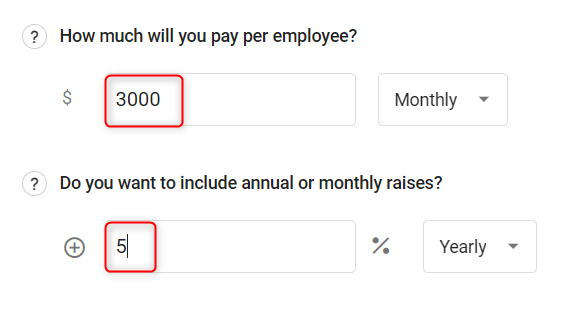
NOTE: You can configure a total monthly or annual salary only. It is not configured to accept hourly wages.
- 4
-
Fill in the other necessary details and click on Save.

TIP: Moving finance items from one group to another is hassle-free. For a detailed walkthrough, check out our help guide here.
Entering a varying number of Part-time employees who make the same amount each month:
This method works well if you pay part-time staff the same amount each month, but the number of employees you have fluctuates from month to month.
- 1
-
Begin by setting up a personnel entry as shown in Entering Personnel. Choose a Group of Employees.
- 2
-
For the number of employees in the group, choose Varying numbers. Move on next input:

- 3
-
For the salary amount, choose Constant amount. Enter the salary amount you'll pay one employee each month:

- 4
-
Indicate whether they are On-staff employees or Contract Workers, enter percentage benefits & taxes, and choose an expense as either Regular Personnel or Personnel as Cost of Sales(Direct labor)
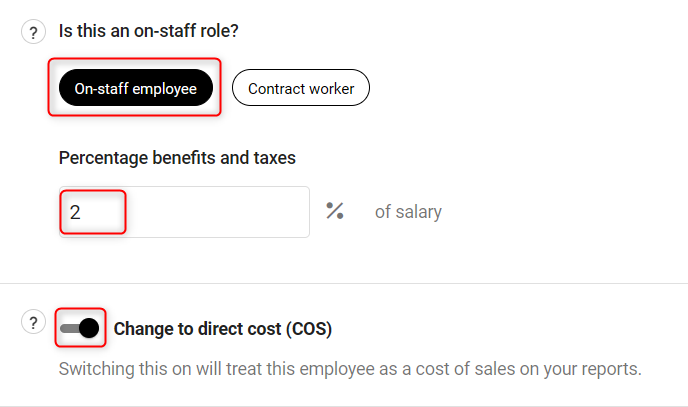
- 5
-
Then indicate when the employee(s) will start/join and terminate his job. Click on Save.

- 6
-
In the Sheet, For the number of employees in the group. Enter the number of part-time employees you will have in each month:
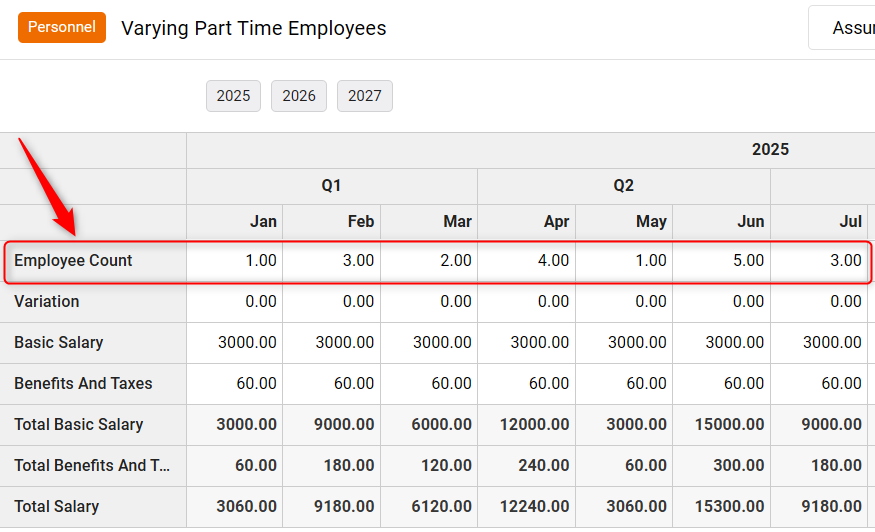
NOTE: The system will autosave the changes you make in the sheet.
This method will work well for many types of businesses, as the dollar amounts are generally more important to the business plan than the headcount. If your business needs to represent a more accurate headcount in the plan, use the method below.
Representing Part-time Personnel through HeadCount:
The system defaults to representing only full-time employees in the headcount. For businesses that have part-time staff and need to show an accurate headcount in the plan, the method below is a good workaround. Admittedly, however, it is a bit labor-intensive and involves some manual calculation.
Entering a single Part-time employee with an accurate Headcount:
- 1
-
Begin by setting up a personnel entry as shown in Entering Personnel. Choose a Group of Employees, even though you are only representing a single employee. This is because, in a group entry, you can customize the number of employees.
In the example below, we're representing one employee who works 20 hours per week or half of the standard full-time workweek. So we've set the number of employees at 0.5: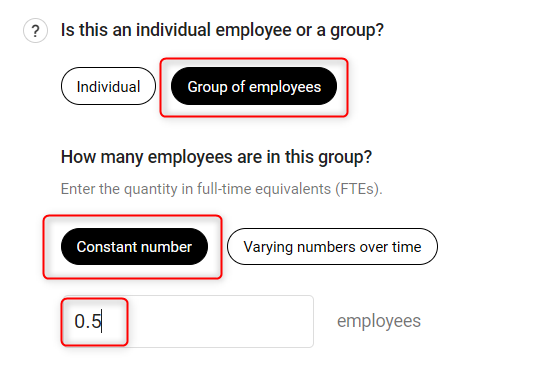
You can customize the decimal number you'll use according to the average percentage of a standard full-time work week your employee will work. As another example, a part-time employee who works 30 hours per week is working 75% of the standard full-time workweek. So we could represent this employee with a decimal of .75 instead.
- 2
-
For the salary amount, use a number representing a full-time equivalent of what you'll pay this employee. This is because we've used a decimal to represent the employee number. For the salary to be calculated correctly, we need to use a full-time salary amount.
In this example, we will pay our part-time employee $1500 per month. Since we entered a number of employees as 0.5, we'll enter the full-time salary of $3000: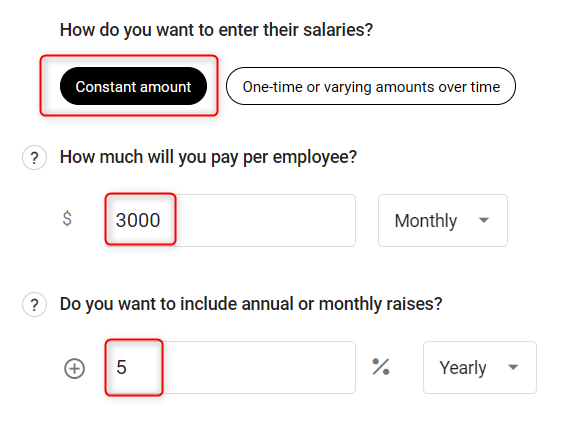
NOTE: You can configure a total monthly or annual salary only. It is not configured to accept hourly wages.
- 3
-
Fill in the required other details and click on save.
- 4
-
In the Planned Personnel table below, we see that the HeadCount now accurately shows several full-time employees alongside our part-time employees. We can also see that the salary amount has been calculated correctly:
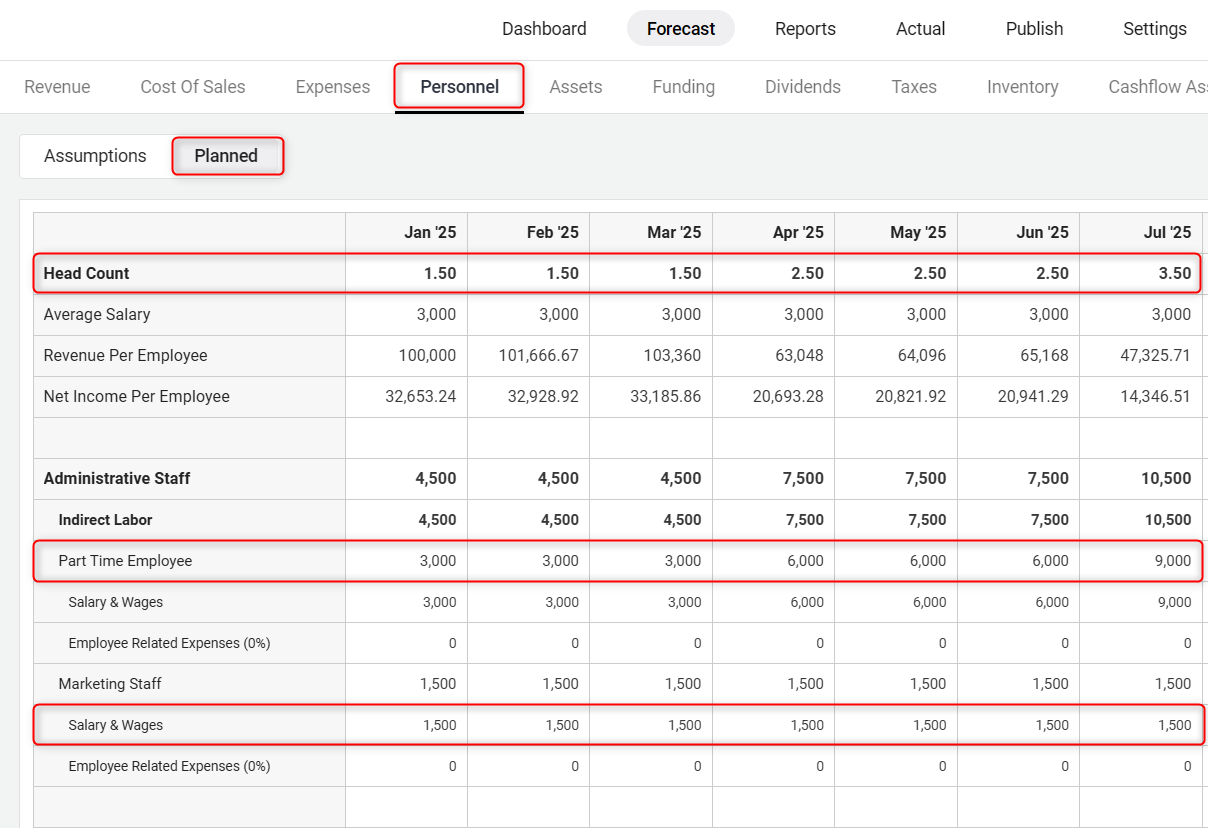
Entering a group of Part-time employees with an accurate Headcount:
- 1
-
Begin by setting up a personnel entry as shown in Entering Personnel. Choose a Group of Employees.

- 2
-
For the number of employees in the group, use a manual calculation to represent the decimal number for each member of the group. This can get a bit complex.
In the example below, we're representing a group of three part-time employees. Two of them are working 20 hours per week, so they can each be represented as 0.5 employees (since they're working 50% of a standard full-time workweek).
The third employee is working 30 hours per week or 75% of a standard full-time workweek. This employee can be represented as 0.75. To come up with a total for the group, we add the three numbers: 0.5 + 0.5 + 0.75 = 1.75 employees.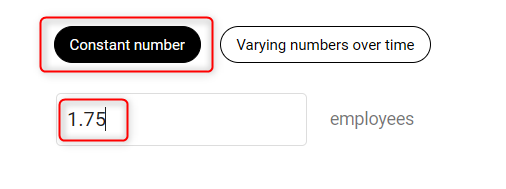
- 3
-
For the salary amount, use a number representing a full-time equivalent of what you'll pay this employee. This is because we've used a decimal to represent the employee number. For the salary to be calculated correctly, we need to use a full-time salary amount.
In this example, we will pay our part-time employee $1500 per month. Since we entered a number of employees as .5, we'll enter the full-time salary of $3000:
NOTE: You can configure a total monthly or annual salary only. It is not configured to accept hourly wages.
- 4
-
Fill in the required other details and click on save.
Copy your personnel expenses
To duplicate a personnel expense group, click the three dots on the group card, then select Copy Group from the dropdown.
This will create a copy with all the associated personnel expense items included. Click on the Delete Group option if you want to delete the expense group.

Click on Duplicate Item to create a copy, or Delete Item to remove the personnel expense from the list:

















